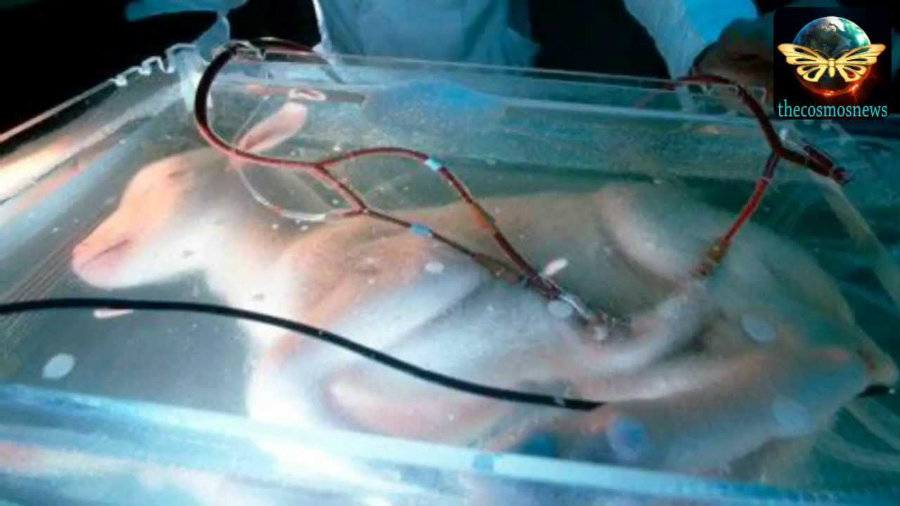Scientists have developed an artificial womb to improve care for extremely premature babies. The device has only been tested on fetal lambs, and it proved to be effective for the animals.
The findings were published April 25 in the journal Nature, in which researchers proved that the device was worked on at least eight animals. The artificial womb appears successful at enabling very premature fetuses to develop normally for about a month.


Today, extremely premature babies that weigh as little as a pound are hooked to ventilators and other machines inside their incubators. Researchers hope that the artificial womb will provide a better solution for premature babies.
Artificial womb will help extreme premature babies to develop
In the United States, extreme prematurity is the primary cause of infant morbidity and mortality, as over one-third of all infant deaths are attributed to prematurity. Several advances have been made regarding neonatal intensive care, and scientists have pushed the limits of viability to 22 to 23 weeks. However, most premature babies that survive develop chronic lung disease or other complications of organ immaturity, especially if they were born before 28 weeks.
Researchers attempted to find a solution for premature babies and set out to create a womb-like environment. The team created a fluid-filled transparent container to simulate the maternal womb, as babies float around in amniotic fluid inside their mom’s uterus. Then, they attached the container to a mechanical placenta that keeps blood oxygenated.
In early-stage testing, conducted on lambs, they found that extremely premature lambs grew apparently regularly, inside of the container for about three to four weeks.
“We start with a tiny fetus that is pretty inert and spends most of its time sleeping. Over four weeks we see that fetus open its eyes, grow wool, breathe, swim,” explained Dr. Emily Partridge, from the Children’s Hospital of Philadelphia and co-author, according to the Boston Globe. “It’s hard to describe actually how uniquely awe-inspiring it is to see.”
She noted that human testing is still three to five years away, although the researchers are already in discussions with the Food and Drug Administration.
Alan Flake, lead author of the study and fetal surgeon at the Children’s Hospital of Philadelphia, said that they are trying to extend the process to a normal gestation, as he considers it as a temporary bridge between the maternal womb and the outside world.
Hospitals attempt to save extremely premature babies, including those born before 26 weeks gestation and even babies born between 22 and 23 weeks of gestation. Extreme prematurity can lead to the infant’s death and can affect survivor with severe disabilities like cerebral palsy.
One of the biggest risks for premature babies is that their lungs aren’t ready to breathe air. Before birth, the amniotic fluid flows into the fetus’s lungs, providing growth factors crucial for the proper development of the lugs. When babies are born too soon, doctors hook them to ventilators to keep them alive, but they risk permanent lung damage.
Flake believes that the artificial womb they created will support the youngest babies for a few weeks, until their organs are mature enough to handle regular hospital care, just like older babies who are at less risk of disability or death. The newest artificial womb is simpler than previous attempts developed by other researchers.
Premature lambs were used to test the womb-like system
To test the artificial womb, the premature lambs were delivered by C-section and immediately put into a temperature-controlled bag that was filled with a substitute for the amniotic fluid that they need to swallow and take into their lungs for properly developing them.
Marcus Davey, another co-author of the study, noted that they make gallons of the amniotic fluid substitute every day. Currently, it’s an electrolyte solution, but Davey is working to add other components to the liquid to make it more like real amniotic fluid.
The researchers then attached the lambs’ umbilical cords to a machine that exchanges carbon dioxide in blood with oxygen, the process that placenta normally does. The lambs’ hearts circulated the blood, and there was no need for another pump.
The team tested five lambs whose biological age was equivalent to 23-week human fetuses and also tested three more lambs that were a little older. They all appeared to grow normally, without any significant changes in their blood pressure and other important health measures. They found that the lambs endured few complications during their time inside the artificial womb, and they were able to develop properly. Flake noted that the artificial womb is not intended for fetuses younger than 22 weeks, as it’s not a method for artificially growing embryos.
Some of the lambs from the study were euthanized to study their organs, and the team found that they all had the normal size and shape for their gestational age. One of the surviving lambs currently lives a healthy life on a farm in Pennsylvania.
Source: Boston Globe
